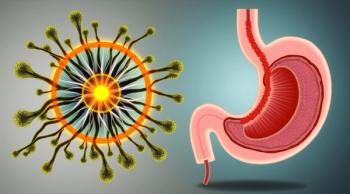
NIH Scientists Develop New Mouse Model to Study Salmonella Meningitis
National Institutes of Health (NIH) scientists have established in mice a way to study potentially life-threatening meningitis caused by Salmonella. Bacterial meningitis happens when bacteria infect the central nervous system (CNS), causing a serious disease that can be life-threatening and difficult to diagnose and treat. Patients who survive often have permanent brain damag
This fluorescent micrograph shows detection of Salmonella (red) in macrophages (green) and other immune cells in the ventricles of the brain of a mouse orally fed Salmonella. Salmonella-infected areas were associated with an increase of cells (blue nucleus) in the ventricles and meninges of the brain, a hallmark of bacterial meningitis. Courtesy of NIAID
National Institutes of Health (NIH) scientists have established in mice a way to study potentially life-threatening meningitis caused by Salmonella. Bacterial meningitis happens when bacteria infect the central nervous system (CNS), causing a serious disease that can be life-threatening and difficult to diagnose and treat. Patients who survive often have permanent brain damage.
Salmonella Typhimurium is one of the most common causes of food-borne disease in the United States and often causes a self-limiting gastrointestinal (GI) infection. However, in people with impaired immune responses, Salmonella Typhimurium can cause severe systemic infections, spreading through the blood to other organs. In some cases, the bacteria spread to the CNS, causing meningitis. People at risk include the very young and the elderly, people with advanced HIV/AIDS, and those with sickle cell disease. Salmonella meningitis, which was rare globally, is now one of the most common forms of bacterial meningitis in parts of Africa and has a high case fatality rate.
Researchers at NIH's National Institute of Allergy and Infectious Diseases (NIAID) infected mice orally with Salmonella Typhimurium to mimic food-borne infection. They found that Salmonella moved from the GI tract to the blood and then to the brain, resulting in meningitis. Damage observed in the brains of Salmonella-infected mice resembled that observed with human meningitis, providing a new model for investigators to study human disease.
Collaborators include Salmonella and neuroimmunology experts at NIAID's Rocky Mountain Laboratories and biologists at the University of Colorado. They plan to use the model to determine how Salmonella Typhimurium infects and causes damage in the brain, including which immune cells are involved. They also will use the model to study potential treatments to prevent Salmonella from gaining access to the CNS or limiting the damage during meningitis.
Reference: Bauler T, et al. Salmonella Meningitis Associated with Monocyte Infiltration in Mice. American Journal of Pathology DOI: 10.1016/j.ajpath.2016.09.002 (2016).
Source: NIH
Newsletter
Stay prepared and protected with Infection Control Today's newsletter, delivering essential updates, best practices, and expert insights for infection preventionists.




